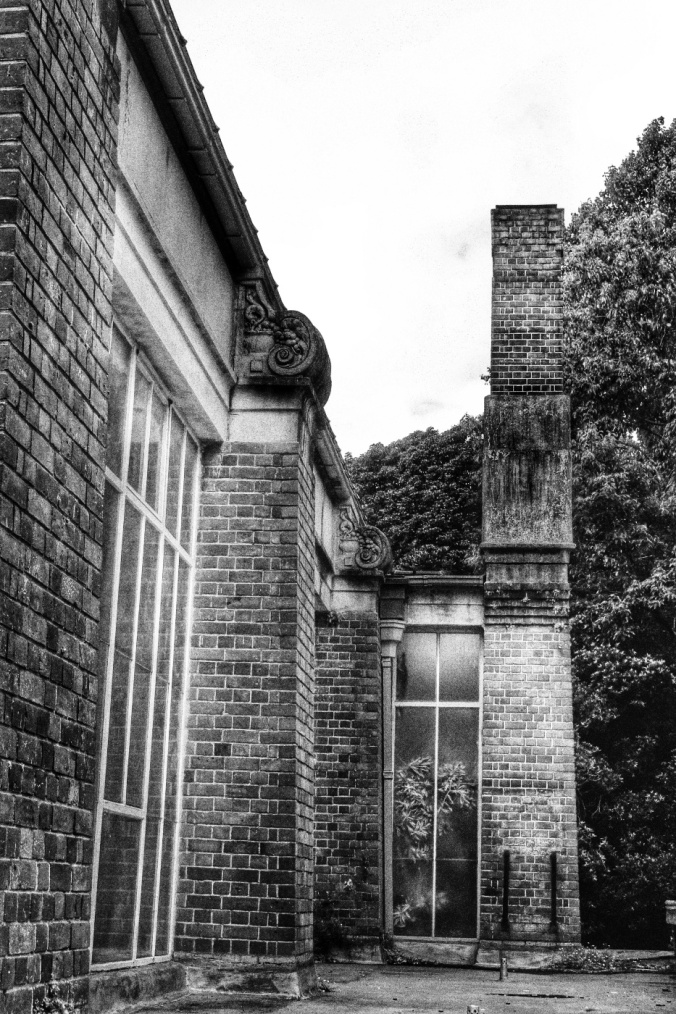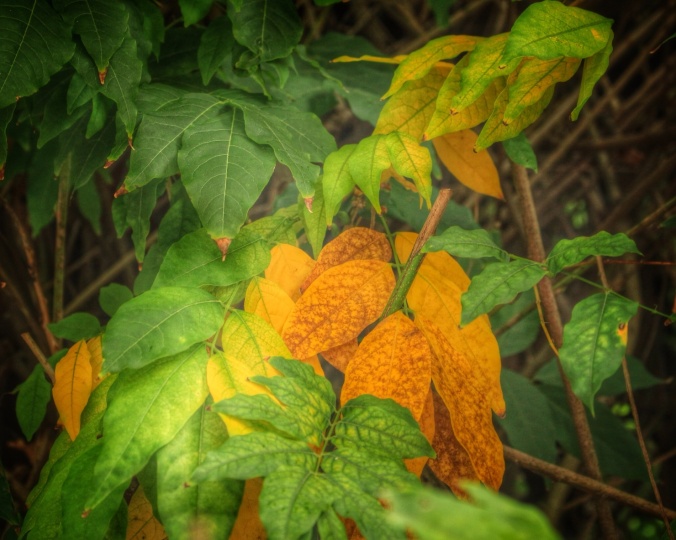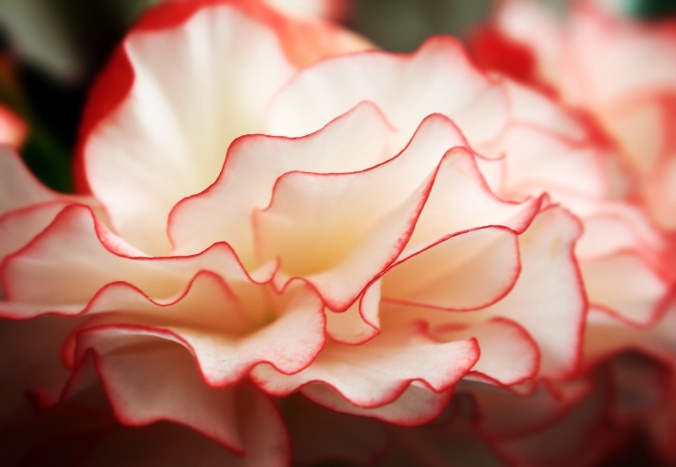Month: March 2016
The Changing Seasons: autumn on a plate
I hadn’t intended to post another recipe for Cardinal Guzman’s Changing Seasons challenge, but this one arrived — fully formed — at precisely 3.18 this morning (I checked). As I’m not often woken by ideas this tasty, it seemed silly not to make the dish and share the photo.
Golden Queen peaches and figs are both in season here, and while I have to buy the peaches, I’m lucky enough to have a fig tree that is bearing about four fruit a day at the moment.
I poached both the peach half and the fig halves in a syrup flavoured with stem ginger and lemon jest, then popped the peach — cut-side down — in a frying pan to caramelize it. If I were making this as a proper dessert (rather than an experiment), I would roast the peaches to soften and caramelize them in the same process.
The crumb topping was made of finely chopped hazelnuts toasted in a frying pan with a bit of butter.
The icecream was Kapiti vanilla bean.
The Big T was my (surprisingly willing) taster, pronouncing it pretty yummy. Since I asked for constructive feedback, he said the poaching syrup needed more ginger and the crumb a bit more flavour.
I’m working on MK #2 for the boy-child to try later.
The Changing Seasons is a monthly challenge hosted by Cardinal Guzman. There are two versions:
Version 1 (The Changing Seasons V1):
- Tag your posts with #MonthlyPhotoChallenge and #TheChangingSeasons
- Each month, post 5-20 photos in a gallery.
- Don’t use photos from your archive. Only new shots.
Version 2 (The Changing Seasons V2):
- Tag your posts with #MonthlyPhotoChallenge and #TheChangingSeasons
- Each month, post one photo (recipe, painting, drawing, whatever) that represents your interpretation of the month.
- Don’t use archive stuff. Only new material!
“If not now… “DP Photo Challenge #2
Summer is gone, and with it the enervating humidity, leaving Auckland refreshed by cooling breezes. Like the morning mists which briefly shroud Greenhithe and nearby Hobsonville, this season will also pass. Each morning I am awake early enough to walk solitary in the stillness of these mists feel like a gift. “The moment has arrived.”
If not now then when
If now today then
Why make your promises
A love declared for days to come
Is as good as none
You can wait ’til morning comes
You can wait for the new day
You can wait and lose this heart
You can wait and soon be sorry
Now love’s the only thing that’s free
We must take it where it’s found
Pretty soon it may be costly
If now now what then
We all must live our lives
Always feeling
Always thinking
The moment has arrived
This post was written for the Daily Post Photo Challenge: half-light.
“All the things we can’t undo”
Like the half-light that exists between night and day, there is a time in relationships when love is neither thriving nor quite gone.
Drive — the title track of singer Bic Runga‘s first album captures the feeling of longing to hold on to what is good, even as darkness closes in.
Now I know I ought to go
Ride in your car now
But please don’t drop me home
My head so heavy
Could this be all a dream
Promise me maybes
And say things you don’t mean
Let rain fall from concrete-coloured skies
No boy, don’t speak
Now you just drive
Drive
Drive
Take me through
Make me feel alive
Alive
When I ride with you
Keep my heart turning
On axles around you
Keep our love burning
Just like it used to do
Now just for us
They could play our favourite tune
Let’s not discuss all these things we can’t undo
Let rain fall from concrete-colored skies
No boy, don’t speak now
You just drive
Drive
Drive
Speed me through
Make me feel alive
Alive
When I ride with you
Let rain fall from concrete-colored skies
No boy, don’t speak now
You just drive
Drive is also one of the songs used in the play Daffodils by Rochelle Bright. Daffodils is a love story told as much through its use of Kiwi music as theatre.
Here is a clip of Drive, from Daffodils with Colleen Davis performing.
And here is Bic Runga performing the song.
This post was written for the Daily Post Photo Challenge. The theme this week is half-light.
Morning walk
Six Word Saturday: the tiny world at my feet
Wordless Wednesday
Wallflowers and set dressing: behind the scenes at the Wintergarden

View obscured. Plants in the tropical house at the Auckland Wintergarden, seen from the outside. Image: Su Leslie, 2016. Edited with Snapseed.
I seem to be developing an obsession with the Auckland Wintergardens. More particularly, with the interface between flora and architecture, interior and exterior, exhibition and concealment. A few weeks ago, I found myself pondering the display of exotic plants for human entertainment, or:
the human impulse to capture nature and to use our considerable intelligence and skill to maintain species of life in artificial environments made to simulate their own, in order that we may enjoy those species on our own terms. (Nature Confined)
Yesterday, driven from the pavilions by a busload of very noisy tourists, I found myself thinking about the plants pressed up against the building’s exterior windows. From inside, these are the wallflowers, the backdrop to carefully managed displays. They are the hardest-to-reach and the least likely to be stars of the show.

Anthurium leaves behind glass; tropical house at the Auckland Wintergardens. Image: Su Leslie, 2016. Edited with Snapseed.
The pavilions themselves are showing their age. Built almost 90 years ago, the Wintergardens are like a once-majestic theatre — still putting on a dazzling show for the visitors, but behind the scenes it’s all starting to look a bit faded.

’round the back. Behind the tropical house, Auckland Wintergarden. Image: Su Leslie, 2016. Edited with Snapseed.
I’ve always rather liked the theatrical metaphor for life, drawn from the sociology of Erving Goffman (1922-82). The language of theatre makes sense to me as a way of understanding everyday life (performance, audience, script, props, costumes — even the distinctions between front-of-house and back-stage).
And while we each enact personal performances, we do so within our society, where politics, culture and morality are themselves performed. In this social theatre, some people, groups and ideas are given starring roles. Others are marginalised; relegated to the chorus, to non-speaking parts, or even denied the stage altogether.
As both audience and players, it is our responsibility to understand the staged and constructed nature of social life, and not to forget those squeezed to the fringes — only visible if we really look.
This post was written for Sally D’s mobile photography challenge at Lens and Pens by Sally.
“And the dance goes on …”
Marlyne Jackson is an Auckland-based artist whose work includes beautiful chandeliers constructed from found glassware, china and household objects (including tea-strainers, lampshades and colanders).
Marlyne has exhibited these chandeliers collectively as “And the Dance Goes On”, often hanging them in trees to be blown in the breeze. I filmed this clip one evening as the wind was beginning to pick up (heralding the arrival the next day of a terrible storm). Scottish folk band Capercaillie provided the soundtrack; Dr MacPhail’s Reel.
Written for the Daily Post Photo Challenge: dance.
Sunday Afternoon: Frankie Goes To Bollywood
Te Uru, Waitakere Contemporary Art Gallery. ‘Frankie Goes to Bollywood’ exhibition, Bepan Bhana. Image: Su Leslie, 2016
A series of diptychs featuring Bollywood film couples against the backdrop of some iconic west Auckland coastline line the walls of the Waitakere Contemporary Art Gallery. These paintings by Bepan Bhana are both a fun, colourful juxtaposition of painting styles, and a serious commentary on the commercialisation of landscape. In a country like New Zealand where tourism is a significant source of revenue, the relationship between landscape as natural heritage and economic resource is a complex one.
Frankie Goes To Bollywood is showing at Te Uru Waitakere Contemporary Art Gallery until 15 May.








